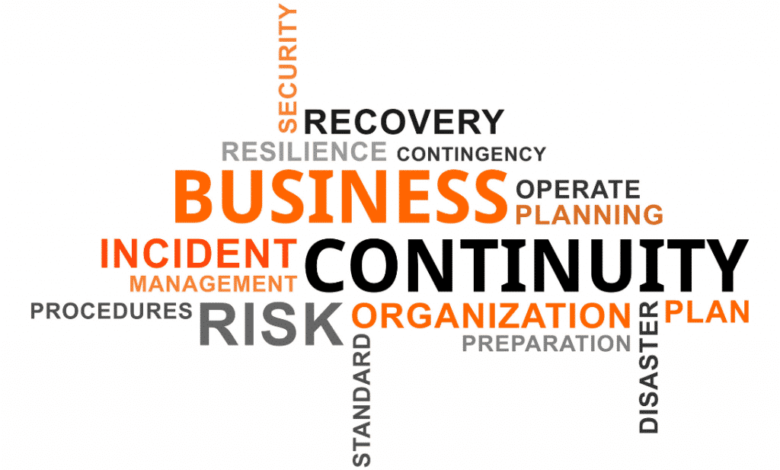Risk Management And Ensuring Business Continuity

In today’s fast-paced business landscape, ensuring continuity is paramount. If you’re unprepared, unforeseen disruptions, whether natural disasters (which are increasingly common here in Australia) or technological glitches, can cripple your operations.
However, only one in four small businesses currently have a current business continuity plan, according to a report by the Australian Small Business and Family Enterprise Ombudsman.
In this blog, I’ll explore practical ways you can safeguard your business against disruptions and help keep your organisation moving.
Risk assessment
Before implementing any business continuity plan, conduct a comprehensive risk assessment. Identify potential risks such as natural disasters, cyber threats, supply chain interruptions and operational failures. Understanding these risks is the first step towards crafting a resilient strategy.
As well as your own risks and existing continuity plans, you need to assess the continuity plans of your key suppliers and vendors. A disruption in their operations could directly impact your business. Work closely with suppliers to ensure they have robust business continuity plans in place, and consider diversifying your supplier base to reduce dependency on a single source.
Backups
Internet connectivity is the backbone of modern business operations, so it’s vital that you give yourself a connection backup. Enterprise Ethernet, with its dedicated and symmetrical bandwidth, ensures a reliable and high-performance internet connection. Because it’s run on a separate network to FTTP connections, it has little to no latency-inducing network congestion and, perhaps more importantly in terms of business continuity, that means you can also run an FTTP connection to your business premises to ensure you’re never without internet. This redundancy minimises the risk of prolonged downtime due to internet outages.
Regularly back up critical data and ensure that it can be swiftly recovered in the event of a disruption. Cloud-based solutions offer scalable and secure options for data storage and recovery, providing flexibility and accessibility even during challenging times.
This is also related to the need for a robust remote work infrastructure. Invest in technologies that facilitate seamless remote collaboration, ensuring that your team can work efficiently from anywhere. Enterprise Ethernet plays a pivotal role in providing the high-speed and reliable internet connectivity necessary for remote work.
Communication and policies
During a crisis, clear communication is essential. Before anything has a chance to go wrong, establish communication protocols that outline how information will be disseminated internally and externally. My team is small, but we use multiple channels, such as email, messaging apps and collaboration platforms, to ensure that communication remains effective even if one channel is compromised. Be clear about whose job it is to share information with others, and what information is to be shared within the business and outside.
Well-communicated business continuity policy and procedures are essential. Expert staff who know exactly what to do in case of emergency should have back-ups and deputies in case they are absent on the day they are needed, or they leave on short notice and take their knowledge and experience with them.
Ensure that you have disaster policies and procedures in place and that these are shared widely. These should describe the detailed steps (both the ‘who’ and the ‘what’) to be taken in the event of problems.
Your team is a critical component of your business continuity plan. Conduct regular training sessions to ensure that employees are well-versed in the procedures they need to follow during disruptions. Foster a culture of awareness and preparedness to empower your workforce to act swiftly and effectively.
Keep up to date
Stay abreast of industry regulations and compliance standards. Ensure that your business continuity plan aligns with these regulations to avoid legal and financial repercussions. Compliance not only safeguards your business but also builds trust with clients and stakeholders.
Remember that a business continuity plan is not a one-time effort; it requires regular testing and updating. Conduct simulated exercises to evaluate the effectiveness of your plan and make necessary adjustments. As your business evolves, ensure that your continuity plan evolves with it.
I know from experience that safeguarding business continuity requires a multifaceted approach. From comprehensive risk assessments to the adoption of key technologies and clear organisation-wide communication, your business must be proactive in mitigating potential disruptions. This will help ensure that you can navigate challenges and emerge stronger after disaster.



